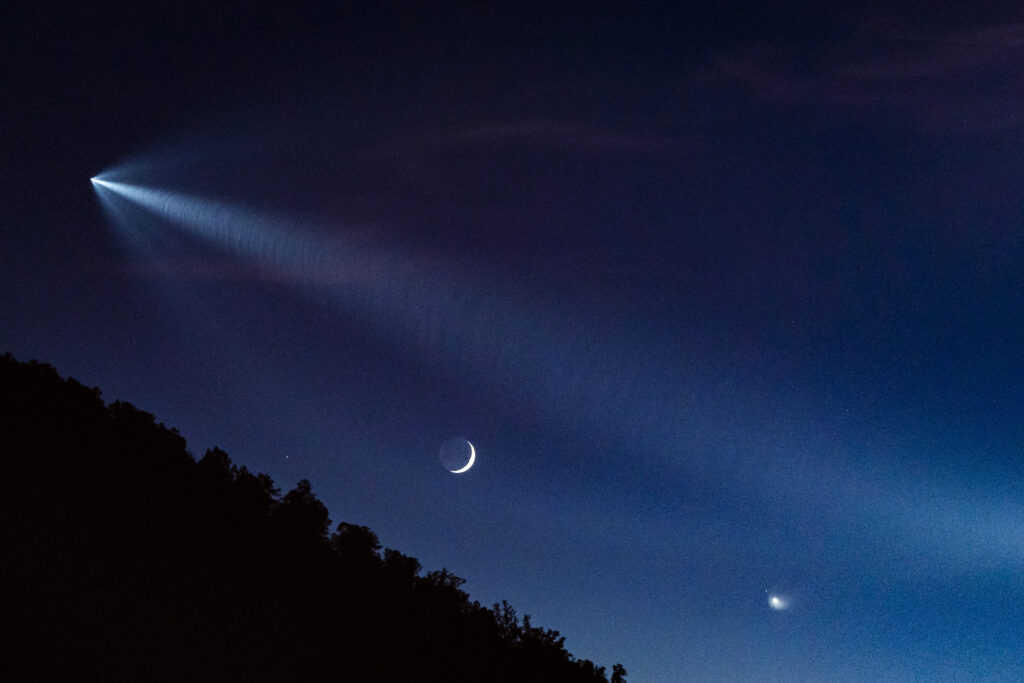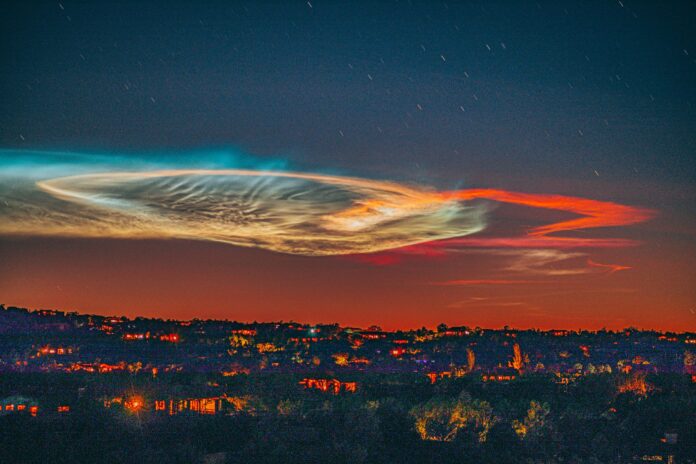It was like a scene from “War of the Worlds” as a bright unidentified flying object hurtled across Sedona’s western sky before finally disappearing, leaving a glowing trail as the only evidence of its passing.

Speculation about the object’s nature ranged from a comet to, in typical Sedona fashion, an alien spacecraft. However, the origin of this spectacle was disappointingly terrestrial.
The object flying through the sky on Thursday, Oct. 27, was none other than SpaceX’s Falcon 9 rocket as it completed its Starlink mission. This was SpaceX’s eighth launch for this Falcon 9 rocket.

“Falcon 9 is a reusable, two-stage rocket designed and manufactured by SpaceX for the reliable and safe transport of people and payloads into Earth orbit and beyond. Falcon 9 is the world’s first orbital class reusable rocket. Reusability allows SpaceX to refly the most expensive parts of the rocket, which in turn drives down the cost of space access,” SpaceX states on its website.

The Falcon 9 launch took place at 6:14 p.m. Pacific Time on Oct. 27, at Vandenberg Space Force Base in California. The flight lasted approximately 10 minutes, during which time the rocket’s first stage, powered by nine Merlin engines, reached speeds of approximately 4,660 mph, or 7,500 kilometers per hour, and an altitude of 80 miles, or 130 kilometers.

The second stage of the rocket, powered by one Merlin engine and carrying the rocket’s payload, separated and continued the flight, reaching speeds of 16,777 mph or 27,000 kph, and an altitude of 142 miles or 230 km. During the course of its flight it released 53 Starlink satellites into low earth orbit. These satellites are part of the Starlink mission and are designed to provide high-speed internet to rural communities.

While the rocket’s flight path may have been visible in Sedona, the first stage of the rocket remained over Southern California and touched down in the Pacific Ocean on the SpaceX recovery platform called “Of Course I Still Love You,” named after a ship in late sci-fi writer Iain Banks’ Culture series.

The second stage of the rocket continued into a low earth orbit on a southeasterly course, distributing satellites.
The strange shapes viewers saw in the exhaust trail resulted from the first and second stage of the rockets separating. The large loop exhaust trail that was seen by many that was the first stage of the rocket returning to land on the drone-piloted recovery platform in the Pacific Ocean. The bright dot seen flying through the sky was the second stage and payload entering low earth orbit. Many people reported seeing small pieces falling off the rocket; these were the satellites that the rocket was delivering as part of its payload.

According to SpaceX founder Elon Musk, the company will continue to make space travel accessible, and one way it’s doing that is through missions like the Starlink project.

“You want to wake up in the morning and think the future is going to be great — and that’s what being a spacefaring civilization is all about. It’s about believing in the future and thinking that the future will be better than the past. And I can’t think of anything more exciting than going out there and being among the stars,” Musk stated on the SpaceX website.
Additional information about SpaceX launches can be found on its website. Starlink satellite internet is available in the western United States.



